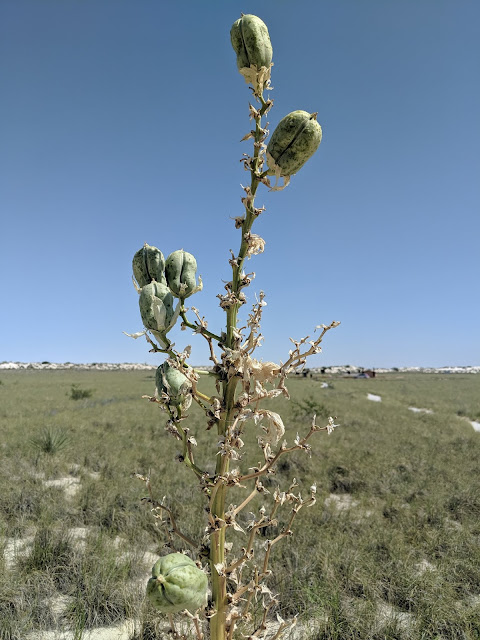One afternoon, we were out for a walk and saw this sign on a pipe for telephone wires.
Patty posed as if holding the reins for this horse painted on one of the dumpsters.
Besides two gun stores, lots of pickup trucks and ATVs, there are also a lot of artists and stores with crafts. Off the Beaten Path is just one of many in the downtown area, and it even has a Pride Flag this month.
The town of Cloudcroft has Independence Day activities on both the weekend before and the weekend after the 4th. On Saturday, there was a street dance from 7:00 - 11:00 in the evening with live music - I could not hear it from inside our house, but when I took the dog out I could just barely hear the band. But earlier, they had the Independence Day Parade at 4:00. I made a trip to the store just before 4:00 and came across George and his camel Matilda, both with flags for the holiday parade.
To see a video of George riding Matilda in White Sands National Park click here.
The parade went from the schools on the main highway, Route 82, then right for a block to Burro Street, the up Burro Street to the library. It was typical small town parade but several hundred spectators turned out to watch.
And so our time in Cloudcroft has come to an end. It was nice to be in the mountains, delightful weather, peace and quiet, and comfortable rental home for the month.
Besides two gun stores, lots of pickup trucks and ATVs, there are also a lot of artists and stores with crafts. Off the Beaten Path is just one of many in the downtown area, and it even has a Pride Flag this month.
The town of Cloudcroft has Independence Day activities on both the weekend before and the weekend after the 4th. On Saturday, there was a street dance from 7:00 - 11:00 in the evening with live music - I could not hear it from inside our house, but when I took the dog out I could just barely hear the band. But earlier, they had the Independence Day Parade at 4:00. I made a trip to the store just before 4:00 and came across George and his camel Matilda, both with flags for the holiday parade.
To see a video of George riding Matilda in White Sands National Park click here.
The parade went from the schools on the main highway, Route 82, then right for a block to Burro Street, the up Burro Street to the library. It was typical small town parade but several hundred spectators turned out to watch.
And so our time in Cloudcroft has come to an end. It was nice to be in the mountains, delightful weather, peace and quiet, and comfortable rental home for the month.

























































